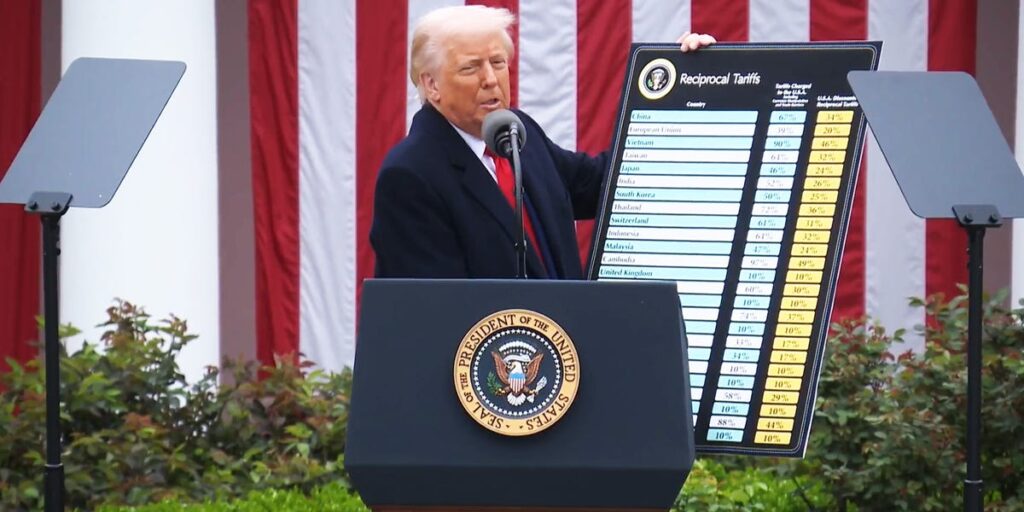President Donald Trump’s latest round of tariffs had two surprising omissions: Mexico and Canada.
Many countries, including China, were slapped with large reciprocal tariffs on Wednesday. After Trump’s announcement, CNBC reported that Chinese goods could receive a 54% tariff when combining the new tariffs (34%) with ones that have been previously announced. European Union goods will be subject to a new 20% tariff.
According to the White House, this doesn’t mean the US’s neighbors are off scot-free. Pre-existing 25% tariffs on most Mexican and Canadian goods will remain.
USMCA and Trump’s previous tariffs
Under Trump’s previous order, a 25% tariff was applied to all Mexican and Canadian goods that are not compliant with the United States-Mexico-Canada Agreement.
The White House has said the tariffs are necessary because the two countries are not doing enough to stop illegal immigration and the smuggling of fentanyl into the United States from the northern and southern borders. Leaders of both countries have disputed this claim.
The USMCA trade deal, which replaced the North American Free Trade Agreement in 2020, maintains NAFTA’s zero-tariff treatment for most agricultural products, textiles, apparel, and other goods that meet the trade agreement’s rules of origin.
Non-compliant energy and potash from the bordering nations remain subject to a 10% tariff; the latter was viewed as the White House bowing to pressure from the farm industry worried about a key ingredient in fertilizers.
Chris Tang, a UCLA professor and expert in global supply chain management and the impact of regulatory policies, told Business Insider the Trump administration’s choice to leave Canada and Mexico off the tariffs list on Wednesday may be a symbol that the president recognizes the neighboring nations’ significance to the US economy — but it’s also likely a negotiation tactic.
“So, for example, right now, the products that comply with the USMCA are still tariff-free,” Tang said. “But that’s temporary. Trump has said, ‘Well, that may adjust.’ And that gives him still some wiggle room to negotiate.”
If Trump’s prior order were terminated, a spokesperson for the White House told Business Insider all non-USMCA compliant goods would be reduced to a 12% tariff.
Margaret Kidd, an instructional associate professor of supply chain and logistics technology at the University of Houston, told Business Insider, “It’s not in our best interest for the United States to alienate our two closest trading partners.”
She added that there was about $945 billion in trade between Mexico and the US in 2024, with most of the products exchanged flowing through Texas. The tariffs on the southern country, she said, have an outsized effect on the border states, which rely on the local economy built around international trade.
“It’s all intermingled,” Kidd said.
Tang said he’s hopeful that the omission of Canada and Mexico from Wednesday’s tariffs could act as a sort of olive branch with the nation’s allies to soothe the trade tensions that have increased since Trump took office.
“Really, our economies are interlinked,” Tang said. “So, hopefully, they can really sit down and work it out because these are our allies, our neighbors — this is very important. So I hope there is a possibility that these three countries can work together.”
Read the full article here
















